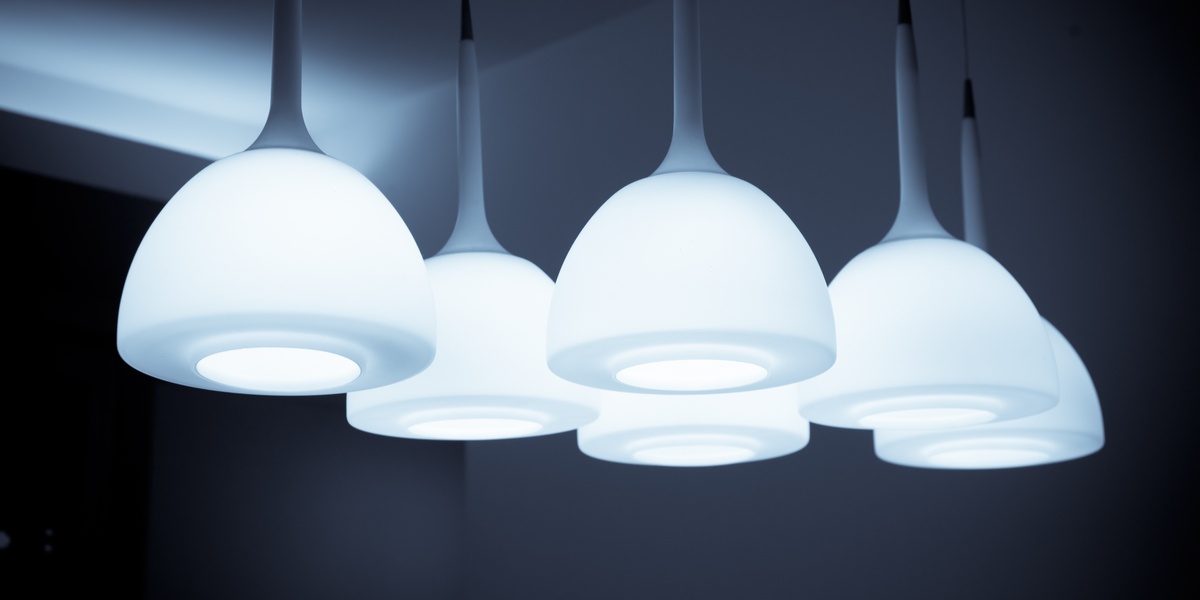Effective Lighting Design with DIALux

A well-designed lighting system provides just the right amount of light for its intended application: less lumens yield poor performance, but more lumens represent wasted energy. Like in any building system design, the optimal capacity can only be specified with an adequate calculation procedure. Lighting designers use the photometric data of proposed fixtures as a starting point. For the calculation procedure they consider the project’s location, indoor or outdoor, as well as environmental conditions like temperature and dirt.
The purpose of lighting calculation is to reach a suitable illuminance level for the intended application. The concept of illuminance describes lighting delivered per unit of area, and it is typically measured in foot-candles (lumens per square foot) or lux (lumens per square meter). In the case of New York City, meeting the lighting efficacy requirements of the NYC Energy Conservation Code is also important.
Illuminance levels for each location are not arbitrary; they are established by industry organizations such as IESNA (Illuminating Engineering Society of North America). When specifying a lighting system, design engineers aim for the illuminance values established in the IESNA Lighting Handbook. Achieving the exact specified values is not feasible, but a lighting design is satisfactory if the variation is slight.
Make sure your lighting system meets IESNA and NYC codes.
Lighting calculations can be carried out manually, but this approach demands considerable man-hours and is impractical in modern building design. A more effective approach is using automated software calculations, allowing the lighting designer to focus on the best decisions, while a computer handles repetitive tasks.
The lighting design specialization is available for professionals from different backgrounds. For example, architects, electrical engineers and interior designers all have a knowledge base that is suitable to complement lighting design.
The Lumen Method: Basic Lighting Calculations
The lumen method provides a simple hand calculation approach to estimate the illumination achieved with a proposed lighting distribution. The method becomes impractical for complex room geometries or very large projects that are split into multiple areas. It can be summarized in the following steps:
- Calculate the Room Cavity Ratio (RCR)
The RCR describes the ratio of vertical area to horizontal area in a room. The RCR formula varies depending on room geometry. - Obtain surface reflectances
The reflectance is the fraction of light reflected from a surface, and it is strongly influenced by texture and color. Reflectance values are required for ceilings, walls and floors. - Obtain photometric data
When you purchase a lighting product, its specifications include total lighting output and its spatial distribution. This is fundamental information for lighting calculation procedures. - Determine the Coefficient of Utilization (CU)
Based on the RCR and surface reflectances, it is possible to determine the CU, which indicates how efficiently the lighting output is delivered to the working plane. The CU is obtained from tables in the IESNA Lighting Handbook, and it is also known as Utilization Factor (UF). - Calculate the Maintenance Factor (MF)
The maintenance factor accounts for lighting fixture degradation over time, as well as dirt accumulation. Deterioration and dirt reduce the lighting output, and illuminance falls below the specified level over time if their effect is not accounted for. - Use the Lumen Method Formula
There are two ways to apply the formula. It can be used to calculate the number of luminaires required to reach a given illuminance value, or viceversa - calculating the illuminance that results from a given number of fixtures.
The lumen method formula is provided below:

N = Number of luminaires
E = Required illuminance
n = Lamps per luminaire
F = Lumen output per lamp
CU = Coefficient of utilization
MF = Maintenance factor
The advantage of the lumen method is simplicity, only requiring basic room data and luminaire data. However, it only provides an average illuminance value that does not reflect variations for different parts of the room. In other words, it is impossible to predict if there are excessively illuminated areas or dark spots.
Overview of DIALux
Although there are many lighting design software packages available, DIALux has the advantage of being free while remaining a powerful design tool. Instead of selling the software to lighting designers, they charge lighting manufacturers to have their products on the DIALux database with photometric data and 3D models. This simplifies the design process, since there is no need to search for photometric files of the proposed fixtures.
DIALux can adapt to a wide range of project conditions, ranging from individual rooms to complete buildings, as well as outdoor locations. The software can also account for daylighting through windows. Architectural files from common formats like DWG (AutoCAD) can be imported, avoiding tedious file conversions.
One of the main differences between software calculations and the lumen method is that software determines lighting variations in the area being analyzed, while the lumen method provides the average value. This allows adjustments to the lighting design when some areas are too bright or too dark, which is not possible with the lumen method. DIALux represents these illuminance variations both in 2D plans and rendered 3D models of the space being designed.
Lighting design software is useful not only in new constructions, but also when renovating existing spaces. For example, if LED lighting will be deployed to reduce power bills, a software analysis can be used to determine if lighting quality will be high - energy efficiency should not come at the expense of performance.
What Are the Ideal Lighting Parameters for Offices?
Office buildings represent a significant percentage of total built area in New York City, which means that a lighting designer will probably work on these projects frequently. To achieve the best results, the following parameters are recommended:
| LIGHTING METRIC | RECOMMENDED VALUE |
|
Illuminance Glare Rating Uniformity Color Rendering Index |
500 lux or more 19 or less 0.6 or more 80 or more |
If your property is covered by Local Law 88 of the Greener Greater Buildings Plan, you must upgrade your lighting by 2025 to meet the NYC Energy Conservation Code. Working with qualified lighting designers ensures compliance, while simplifying project approval with the NYC Department of Buildings.

Ankit Javeri
Ankit is the Project Manager at NY Engineers, who holds an M.Tech. Some of his projects includes Community Access, Jackson Avenue
Join 15,000+ Fellow Architects and Contractors
Get expert engineering tips straight to your inbox. Subscribe to the NY Engineers Blog below.


